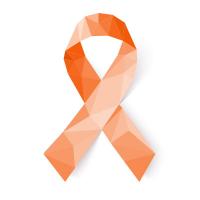Bladder cancer is the sixth most common cancer among males globally, while men are four times more likely than women to be diagnosed with the disease during their lifetime. In this article we take a closer look at the likelihood of bladder cancer in men alongside key risk factors. We then consider symptoms, survival rates, and treatment, before providing some tips that may help reduce the risk of bladder cancer.
- How common is bladder cancer in men?
- What causes bladder cancer in men?
- Why is bladder cancer more common in males than females?
- What are risk factors for bladder cancer in males?
- What are the symptoms of bladder cancer in men?
- What are the survival rates for bladder cancer in males?
- How is bladder cancer diagnosed in males?
- How is bladder cancer treated in men?
- How can I decrease my risk of developing bladder cancer?
- If you have any concerns about bladder cancer, talk to your doctor about Cxbladder
How common is bladder cancer in men?
Globally the risk of bladder cancer varies between regions and is significantly higher in most developed countries compared with other regions, with the highest rates occurring in North America and Europe.2
In the United States bladder cancer is the fourth most common cancer in men. In 2020 it is estimated that bladder cancer will be diagnosed in 62,100 US men and cause death in 13,050 US men3. Although the rate of bladder cancer in Australian and New Zealand men is approximately half that of North American men, it is still 4-fold higher than the rate in Australian/ NZ women. During 2018, 2,764 Australian/ NZ men were diagnosed with bladder cancer and 1,217 died from the disease.2
What causes bladder cancer in men?
Bladder cancer occurs when the cells making up the bladder begin to grow in an uncontrolled way. This disordered growth is caused by mutations in genes that control cell replication, repair, and programmed death. When the abnormal cells cluster a tumor is formed, which can spread over time from the surface layer of the bladder, to the bladder muscle and wall, and then to other sites in the body.
The gene mutations associated with bladder cancer usually develop during a person’s life rather than being present at birth – it’s estimated that less than 10% of bladder cancers arise from inherited genes.4 Carcinogens present in tobacco smoke and certain industrial chemicals are the major known causes of genetic mutations leading to bladder cancer, therefore higher rates of smoking and occupational exposure to chemicals are likely to partly account for the higher rate of bladder cancer in men. Other factors potentially associated with the increased bladder cancer risk in men are discussed below.
Why is bladder cancer more common in males than females?
The reasons for the large difference in bladder cancer rate between men and women are not fully understood. Several factors may play a role, both environmental and biological.
- Environmental: As previously mentioned, a higher rate of tobacco smoking in men is thought to be a major contributor to their higher risk of bladder cancer.5 Men are also traditionally more likely to be employed in occupations associated with the production of paint, metal, petroleum products, and rubber, where they may be exposed to known carcinogens. Dietary factors may also play a part; for example, males may have a tendency for greater consumption of processed meats, which has been linked to a higher risk of bladder cancer in several studies.
- Biological: After allowing for environmental factors such as smoking and occupational exposures, there is still a higher rate of bladder cancer in men compared with women.6 Recent research suggests that an X chromosome-linked gene may be significant. Associated with suppression of the tumor, this gene is more highly expressed in females (with XX chromosomes) compared with males (with XY chromosomes). Differences between males and females in sex hormones (e.g., androgens, estrogen) and sex hormone receptors have also been implicated.6,7
What are the risk factors for bladder cancer in males?
Several factors have been linked with an increased risk of developing bladder cancer, both in men and in women. Some of these include:
- Age: Bladder cancer predominantly affects older adults. In the United States, over 90% of people diagnosed with bladder cancer are 55 years and older.

- Race/Ethnicity: Bladder cancer risk varies by race and ethnicity, the causes of which remain unclear. In the United States, White men are approximately twice as likely to develop bladder cancer compared with men of other races. Similarly, the risk in non-Hispanic men is around double that of Hispanic men.

- Tobacco smoking: Tobacco smoke contains known carcinogens. Smoking is the most important risk factor for bladder cancer and is responsible for about half of all cases in men (and women). Compared with non-smokers, smokers are 3 to 4 times more likely to get bladder cancer8.
- Workplace exposures: Occupational exposure to carcinogens such as aromatic amines and certain hydrocarbons is also a prominent bladder cancer risk factor. These chemicals are commonly used in the production of dyes, paint, metal, rubber, and petroleum products. Industries and occupations that have been linked with increased risk of bladder cancer include the rubber industry, firefighters, and painters as well as farmers who use fungicides.
- Arsenic: Drinking water containing high levels of arsenic has been linked to increased bladder cancer risk. Some areas and water sources (e.g., private wells) carry a higher risk of excessive arsenic exposure.
- Radiation therapy: Men who have received radiation in the pelvic area (e.g., for treatment of prostate cancer) have a higher chance of developing bladder cancer.
- Previous bladder cancer: People who have had bladder cancer have a relatively high risk of recurrence – evidence indicates that around 70% of low- and medium-risk bladder cancers recur5.
- Diet and nutrition: Several dietary and nutritional factors may be associated with bladder cancer risk. For example, current evidence suggests that daily consumption of tea and plentiful vegetables and fruit could each decrease the risk of bladder cancer9. In contrast, excessive consumption of processed meats may contribute to a higher risk of the disease10.

What are the symptoms of bladder cancer in men?
Blood in the urine is the most common symptom of bladder cancer and often the first sign that is noticed. Depending on the quantity of blood present, urine may appear red, pink, or brownish in color. In the early stages of bladder cancer there is usually minimal or no associated pain. Notably, there may be long periods (weeks or even months) of clear urine in between episodes of blood.
Changes in urinary habits and symptoms of urinary irritation may also be experienced. These symptoms may include increased frequency and/or urgency of urination, pain or a burning sensation during urination, or difficulty passing urine.
If bladder cancer has grown in size or spread to other areas of the body the affected individual may experience a range of symptoms. Depending on how the cancer has spread, these symptoms could include lower back pain on one side of the body, appetite and/or weight loss, general weakness, swollen feet, or bone pain.
What are the survival rates for bladder cancer in males?
It is important to emphasize that the outcomes for bladder cancer improve the earlier it is detected. For instance, while the overall 5-year survival rate (i.e., the percentage of people who are alive 5 or more years after diagnosis) for bladder cancer is 77%, the 5-year survival rate increases for disease that is at an earlier stage, being 96% for cancers that have not spread beyond the surface layer of the bladder (i.e., ‘in situ’).12

However, it is important to remember that each patient and cancer are different, so it is not possible to definitely know the disease course for an individual patient.
How is bladder cancer diagnosed in males?
The diagnostic tests and procedures to detect bladder cancer are selected by doctors based on an individual’s age, symptoms, risk factors, and any history of bladder cancer. These diagnostic approaches may include:
| Diagnostic test | Details |
|---|---|
| Urine tests |
|
| Genomic urine tests, such as Cxbladder |
|
| Cystoscopy |
|
| Diagnostic Imaging |
|
If you're concerned about bladder cancer, ask your doctor about Cxbladder. Cxbladder is a non-invasive genomic urine test that quickly and accurately detects or rules out bladder cancer in hematuria patients and those being monitored for recurrence. The test combines clinical risk factor markers with genetic information, measuring five biomarker genes to detect the presence or absence of bladder cancer.
Learn more
How is bladder cancer treated in men?
Bladder cancer may be treated by a single method or a combination of methods, depending on the type of cancer present and the extent to which it has progressed. Therefore, understanding the type of bladder cancer is an important consideration in selecting an appropriate treatment. Bladder cancer may be classified according to where it is located relative to the bladder:
| In situ | Localized | Regional | Distant |
|---|---|---|---|
| Cancer is confined to the surface layer of the bladder | Cancer has not spread outside of the bladder | Cancer has spread to nearby structures or lymph nodes | Cancer has spread to different parts of the body, such as the bones, lungs, liver |
Bladder cancer is also commonly described based on its location within the bladder wall: cancer that remains in the superficial layers of the bladder wall is termed “non-muscle-invasive”, whereas cancer that has spread into the muscle layer deeper within the bladder wall is termed “muscle-invasive”.
The treatments for bladder cancer can depend on whether it has spread to the muscle wall and might include the therapeutic options as summarized below: ,
| Potential treatment option | Non-muscle-invasive bladder cancer | Muscle-invasive bladder cancer |
|---|---|---|
| Surgery | ✓ | ✓ |
| Immunotherapya | ✓ | |
| Chemotherapy | ✓b | ✓ |
| Radiation Therapy | ✓ |
a A treatment that uses the body’s immune system to fight disease.
b Chemotherapy for non-muscle-invasive bladder cancer is usually delivered directly into the bladder.
How can I decrease my risk of developing bladder cancer?
While bladder cancer cannot be completely prevented, certain things can be done to help lower one’s risk of developing bladder cancer. For instance:
- Quit smoking
- Reduce workplace exposures to chemicals that have been associated with bladder cancer
- Consume a healthy diet (for example, eating lots of fruits and vegetables and limiting consumption of processed meats) and drink lots of fluids
If any symptoms of bladder cancer are experienced, do not delay in seeking advice from your doctor. Early detection of bladder cancer increases the chance of a favorable prognosis.
Cxbladder can help rule out bladder cancer
If tests confirm the presence of blood in urine, the most common symptom of bladder cancer, you'll want to rule out the disease as soon as possible. We recommend you ask your doctor whether Cxbladder is right for you.
Cxbladder is a non-invasive genomic urine test optimized for the rule out of urothelial bladder cancer, the most common form of the disease. The test analyzes five biomarker genes to quickly and accurately rule out the disease, reducing the need for further invasive procedures.
Learn more about Cxbladder Contact us for more information
References
- Richters A et al. The global burden of urinary bladder cancer: an update. World J Urol 2020;38:1895–1904
- Bladder. International Agency for Research on Cancer Global Cancer Observatory. gco.iarc.fr/today/data/factsheets/cancers/30-Bladder-fact-sheet.pdf. Accessed November 3, 2020
- Cancer.net. Bladder cancer statistics. https://www.cancer.net/cancer-types/bladder-cancer/statistics. Accessed November 2, 2020
- American Cancer Society. What Causes Bladder Cancer? www.cancer.org/cancer/bladder-cancer/causes-risks-prevention/what-causes.html. Accessed November 3, 2020
- Saginala K et al. Epidemiology of bladder cancer. Med Sci 2020;8:15
- Kaneko S, Li X. X chromosome protects against bladder cancer in females via a KDM6A-dependent epigenetic mechanism. Sci Adv. 2018;4(6):eaar5598
- Shariat SF, Sfakianos JP, Droller MJ, Karakiewicz PI, Meryn S, Bochner BH. The effect of age and gender on bladder cancer: a critical review of the literature. BJU Int. 2010;105(3):300-308
- Bladder Cancer: Risk Factors. ASCO Cancer.Net. www.cancer.net/cancer-types/bladder-cancer/risk-factors. Accessed November 3, 2020
www.cancer.org/cancer/bladder-cancer/causes-risks-prevention/risk-factors.html. Accessed November 3, 2020 - World Cancer Research Fund/American Institute for Cancer Research. Continuous Update Project Expert Report 2018. Diet, nutrition, physical activity and bladder cancer. Available at dietandcancerreport.org
- Li F, An S, Hou L, Chen P, Lei C, Tan W. Red and processed meat intake and risk of bladder cancer: a meta-analysis. Int J Clin Exp Med. 2014;7(8):2100-2110
- American Cancer Society. Bladder Cancer Signs and Symptoms. www.cancer.org/cancer/bladder-cancer/detection-diagnosis-staging/signs-and-symptoms.html. Accessed November 3, 2020
- SEER Explorer. seer.cancer.gov/explorer. Accessed November 5, 2020
- American Cancer Society. Tests for Bladder Cancer. https://www.cancer.org/cancer/bladder-cancer/detection-diagnosis-staging/how-diagnosed.html. Accessed November 5, 20
- Cancer.net. Bladder Cancer: Types of Treatment. https://www.cancer.net/cancer-types/bladder-cancer/types-treatment. Accessed November 5, 2020
- Cancer.net. Bladder Cancer: Treatments by Stage. https://www.cancer.net/cancer-types/bladder-cancer/treatments-stage. Accessed November 5, 2020
- American Cancer Society. Survival Rates for Bladder Cancer. https://www.cancer.org/cancer/bladder-cancer/detection-diagnosis-staging/survival-rates.html.Accessed November 5, 2020
- Cancer Council Victoria. Treatment for non-muscle-invasive bladder cancer. https://www.cancervic.org.au/cancer-information/types-of-cancer/bladder_cancer/treatment-non-invasive-bladder-cancer.html#:~:text=Key%20points,bladder%20tumour%20(TURBT)%20operation. Accessed November 5, 2020
- Cancer Council Victoria. Treatment for muscle invasive bladder cancer. https://www.cancervic.org.au/cancer-information/types-of-cancer/bladder_cancer/treatment-invasive-bladder-cancer.html. Accessed November 5, 2020
- American Cancer Society. Can Bladder Cancer Be Prevented? https://www.cancer.org/cancer/bladder-cancer/causes-risks-prevention/prevention.html. Accessed November 10, 2020






